Hong Kong Wetland Park is a curious place – with little wetland, excess dryland and an outsize visitor centre with exhibition areas like scifi scenes.
I headed to the Hong Kong Wetland Park a few days ago – in 2008, for my first visit since it fully opened. It’s a place I’ve long been critical of – even though I had some involvement in creating educational videos, but I figured it may be interesting/fun to go with my wife, two-year old son, and a friend and his son. [Written in January 2008; sadly, no great improvements since.]
In Feb 2024 [see below], a friend messaged that not surprising the habitats etc are poor given emphasis on education and ecotourism. As I messaged back, it’s almost like ecotourism without the eco.
The visit indeed proved interesting, but didn’t raise my opinion of the park thing – which to me seemed surreal: as if a bunch of designers who aren’t conservationists had been given a vast budget and allowed to do as they pleased, with only a small nod to actual wetlands and conservation.
March 2014 update: re-visited the outdoor areas of the park, which have improved with age, partly thanks to planted shrubs growing. Still a curious place, way too separate from Deep Bay for my liking. And we ignored the humungous visitor centre.
As if to confirm its weirdness, the park reportedly advertises in the MTR with the a slogan of pure gobbledegook: “Unroll the Hong Kong diverse green temptations”.
But, at least on the latest visit the staff proved helpful, giving us a late, impromptu guided tour, as I explained I was working on a travel piece about Deep Bay.
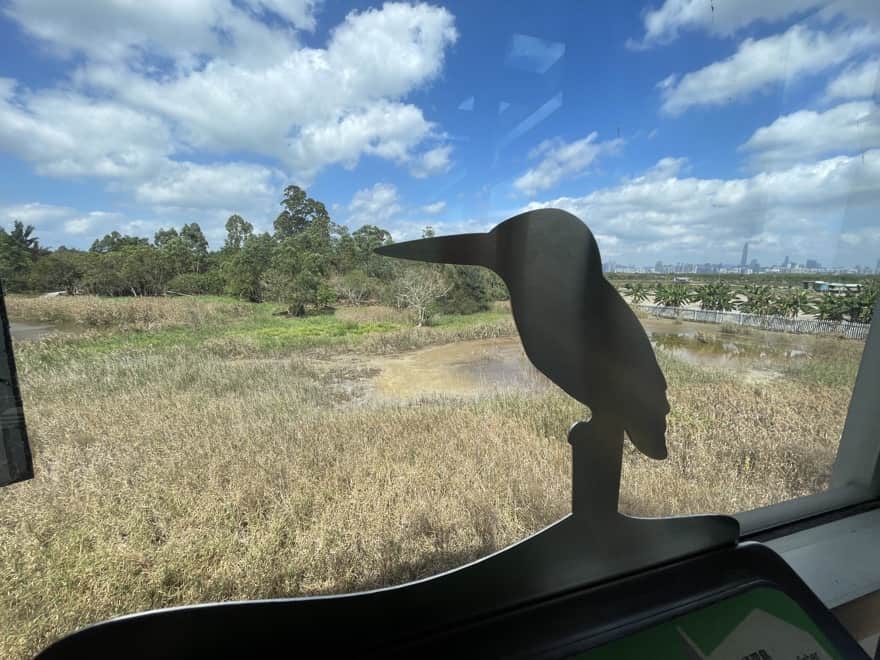
February 2024 update: just paid another visit, while working on an article about Deep Bay conservation. And it’s just as pitiful, again partly considering the monies squandered on it [yes, squandered; little wildlife, few visitors]. See below for more from this visit.
Back to the 2008 article:
Hong Kong Wetland Park supposedly blends tourism and conservation
The park evidently originated with good intentions – as a partial mitigation measure for destruction of extensive fishponds to make way for Tin Shui Wai (lately dubbed the “City of Sadness”, for social ills). But then, it somehow ballooned into a grandiose millennium project – supposedly for tourism as well as conservation.
And, with cost of around HK$500 million, it certainly didn’t come cheap. That’s vast money compared to amounts spent elsewhere in and around Deep Bay wetland – which the Wetland Park is within and yet separate from, and is an internationally important wetland that includes the renowned Mai Po Marshes Nature Reserve.
Adding in 2024: while the planners may have been ignorant of wetland reserves, many international visitors surely are not, perhaps being familiar with at least some of the many fine reserves around the world – and hence, not easily bamboozled into considering this merits being called an “International Wetland Park”.
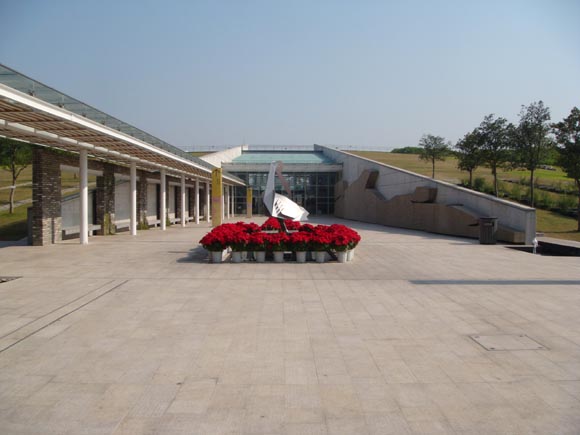
Look at this for an entrance! Once you’ve bought your ticket to the Wetland Park, you walk in along this road, into the vast visitor centre. My wife says it reminded her of a Chinese style grave! Or maybe there’s something North Korean about it – what do you think?
Note that this was on a Saturday, late morning; I’ve heard of very large numbers of people visiting, but there were no crowds this day, even though the weather was fine. (I’ve heard, too, that fair proportion of the visitors were from Tin Shui Wai, right next door: hardly making this a standout tourist attraction!)

We first headed for the outdoors part – walking through the centre, and left. Just outside is an enclosure with Pui Pui, the “Yuen Long Crocodile”, which found fame while on the lam in the nearby Shan Pui River.

Soon after Pui Pui, there’s this walkway past an artificial stream, and between pools. Looks nice, but to me – used to Mai Po, where at this time of year even the walk-in is busy with birds, such as egrets and cormorants flying overhead, trees lively with songbirds – this seemed remarkably sterile. Park-like, and artificial; reminiscent of a quirky movie like The Truman Show or Stepford Wives, but giving no indication this is beside/in one of key wetlands in Asia. [Early 2014 update: with more vegetation, this stream appears almost natural. But still an odd thing to have in this area.]

Here’s a view including Tin Shui Wai. The park building here is an outdoor classroom, where schoolkids can learn about freshwater wetland life, including by looking at insects etc. Looks good, but won’t have devoured much of that monster budget.
Close to yet insulated from Deep Bay

We went into one of the park’s handful of hides for watching for actual wetland wildlife. It’s a grand, three storey structure, yet is too far back from habitat to offer really good views of birds – especially for non birdwatchers who are unused to telescopes. Plus, the habitat is not controlled by the park: this is a creek flowing into Deep Bay.
I’ve quite often walked along the road that crosses the creek here – and over the bridge you can see in this photo; it skirts mangroves, with Deep Bay mudflats close by, and was very good for seeing birds, until the mangroves grew too tall and dense. It’s only a couple of hundred metres or so away, yet there’s no path to this road – no access to Deep Bay itself – from the park. I earlier emailed HK Tourism Commission suggesting such a footpath; had response saying they rather liked the idea. I was even invited to a meeting, in which I was told of difficulties: fishpond owners would want too much money, etc. No such path was built; and to get to the road, at Tsim Bei Tsui, you must travel some kilometres by road.
So, visitors to the Wetland Park are within a stone’s throw of major part of one of main wetlands in Asia, but are kept away, insulated, from it.
We then followed a wooden walkway through mangroves: it was ok, tho rather short. Again, not exciting if you know Mai Po – and if you therefore have some idea of how money could have been spent at the Wetland Park and within Deep Bay with the aim of helping people experience Hong Kong’s very own world class wetland. (We’re told the Wetland Park is world class; but by what criteria is hard to say: not for numbers of wetland birds it supports!)
Small but top-notch habitat
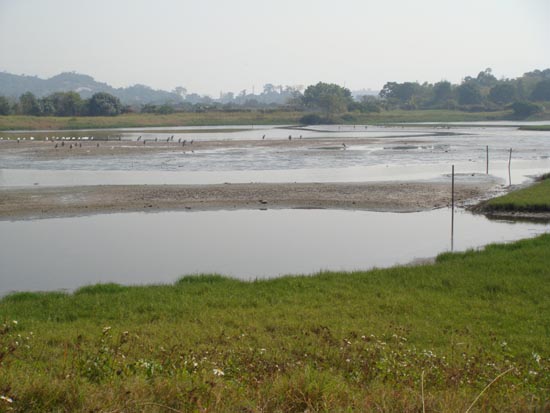
Past the mangrove walk was hide overlooking the Mudflat – a small area of top notch wetland habitat; tidal I believe. Maybe the water and mud here look nasty and dirty to designer types, but they’re clearly rich in wildlife.

There were fair numbers of birds here, including a roosting group of Black-faced Spoonbills: with a world population of little more than 2300 (in 2010), this is Hong Kong’s star bird. Also herons, egrets, Little Ringed Plovers; a Common Kingfisher landed on post near the hide.
If only a goodly chunk of that HK$500 million had been spent on creating habitat like this…
Soulless interior and quirky exhibits
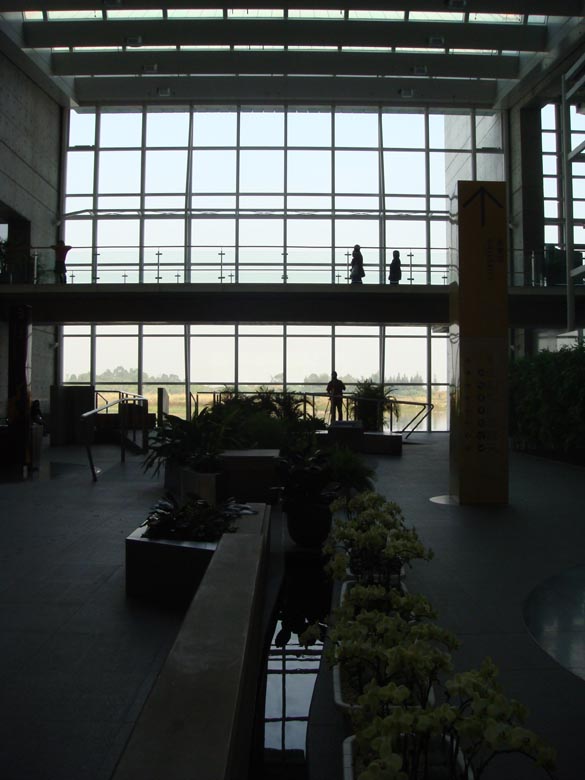
This is in the middle of the visitor centre. Utterly soulless. Maybe the design team included a robot or two?
There are exhibitions inside the centre. You can follow a route, which quickly arrives at this arctic area. Looks great – you can imagine the designers feeling well pleased with themselves for this, and figure this helped the park win its several awards (including from something called the Urban Land Institute).
But does this really have much to do with wetlands? Arctic Fox, Caribou and Snowy Owl – seen in foreground here – aren’t really wetland species.
Then, if you really want to to have an arctic display (and remember, this meant spending exorbitant sums here that could surely have been used for enhancing the existing major wetland just outside, or even helping wetland areas around Hong Kong…), why not have stronger links to Hong Kong? – such as, highlight Hong Kong winter birds that nest in the Arctic.

Next up – an artificial mangrove area, with some living plants/animals including crocodiles. Yes, artificially created mangroves, with one of South China’s main mangrove areas right on the doorstep.
There’s something rather futuristic, I think, in exhibits like this. If habitats vanish, we might have little but things like this through which we can experience what the earth has lost. But for the time being, when there’s a mangrove area here…
I know, there’s that walkway through the mangrove; but there is potential for far more in this area, to give visitors a rewarding experience, whilst not causing major disturbance to wildlife, and even enhancing existing habitats. I believe that experiencing actual wetlands, wildlife that’s wild, will do far more for visitors’ conservation awareness than seeing exhibits that might as well be on the moon.
Again, though, such exhibits were surely wonderful for the designers!
Inside the world’s weirdest wetland park?
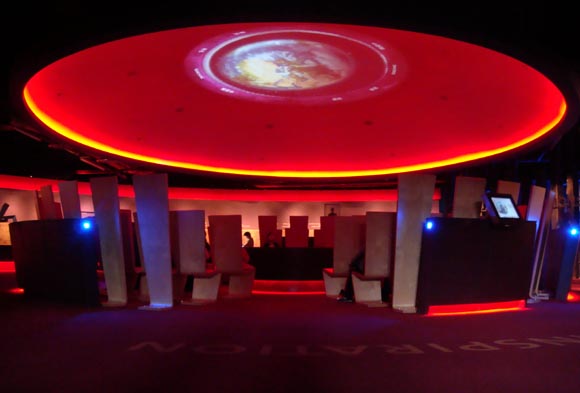
But if the artificial habitat exhibits seem odd, this theatre was downright surreal. It’s dedicated to humanity and wetlands; notably our interactions with them.
You can imagine the designers drooling over their drawings of this, and fairly approaching orgasm on seeing this theatre realised. “Daahhhlling, it’s just divine!”
“Mmm, think of the money we can reap from the Hong Kong government!”
There’s a circular screen as ceiling, with movies projected onto it, showing images of our earth and then zooming in for life at and beside wetlands around the world. Ooohh…
Supposedly, then, giving an educational experience to visitors. Yet the film is in three identical segments, as if in a kaleidoscope – makes it viewable from all round, but odd; and the music we heard was soporific New Age stuff: small wonder two or three people were snoozing away on the seats.
On one of the curving walls of the theatre is large picture echoing Chinese landscape paintings, with some wetland, many people. Move a monitor screen along and up and down this (there are mounted screens you can move), then stop it anywhere, and can see an animated scene with cartoon like people moving about. Again, designers surely drooled over this – but oh, if only money from this had been spent on habitats…
By the theatre is a side room with – wait for it – a motion simulator! Yes, Ocean Park has one, and so has the Wetland Park (which isn’t billed as a theme park). Albeit this proved far smaller, with just six seats; and with a short, rather fuzzy film about cycles involving molecule of water – including rushing along a stream and being peed on by a cow [I kid you not].
Also somewhere along the way was a room with some exhibits re Hong Kong wetlands. Some time ago, I helped cameraman Michael Pitts film some wildlife etc. I believe the footage is used here. I also wrote educational text. We worked with a tiddly budget by wildlife filming standards – presumably as so much of the park’s mega budget was hoovered up by fancy gizmos and space age designs.
Is there a wetland nearby?

The last of the exhibit rooms is this one, with an emphasis on wetland issues. Again looks like designers have run rampant; again seems utterly disconnected from reality – heck, there aren’t even any windows. You might as well be in Cyberport, or somewhere in deep space.
If educating people about wetland issues was really a concern, they could have done a great deal in and around the park: Deep Bay faces a multitude of threats, including encroachment by massive development, pollution, habitat loss…
An idea is applied here that surely seemed good on paper: visitors can act as tv reporters, reporting on problems wetlands face. After minor hassle registering as a reporter; I moved on to terminals where you can try challenges, try reporting on issues. These challenges come from viewing images on computer screens – rather like computer games. But they were very basic compared to most computer games; I looked around an industrial plant, and couldn’t do a lot: not a bit like Tomb Raider, as no guards came to shoot me! (indeed, there were no people to be seen at all).
I noticed here that one of the ways we can help wetlands is through nature tourism. I agree with this.
Yet the Wetland Park seems to me an insult to nature tourism, and an insult to Deep Bay. Yes, claimed to be ecotourism – yet to what extent does the park benefit people who live in and around Deep Bay? I saw nothing suggesting there’s any aim to help fish pond owners, say; you can’t buy their products within the park (there is a shop in the centre, but had a rather twee mix of products; doesn’t look like it has any imperative of being economically successful. No local crafts that I noticed, even the collection of books on sale was very thin).
Bah! I’d better stop; just too annoyed by this place costing HK$500 million, when we have areas – including nearby parts of Deep Bay – that could really use far smaller amounts of cash; the money could have been allocated far more judiciously, still building a grand visitor centre but with great habitats, help for Deep Bay people and so on, as well. Could have built something that is truly world-class for conservation and tourism, rather than something that’s truly, truly weird.
Wetland Park in February 2024: Too Much Dry Land, Too Little Wetland; Plus Wrong-headed Use of Resources
In April last year, I received an email from the Agriculture, Fisheries and Conservation Department – which manages the park [I believe as it has never become financially viable, as was planned, so no private company wants to be in charge]. Included, with my emphases:
By the way, I wonder if you have visited Hong Kong Wetland Park lately. The Wetland Park, with the visitor centre of 1 ha in size and the outdoor reserve of 60 ha is small compared to Mai Po Nature Reserve. However, with the maturing habitats in the outdoor reserve and that it is more accessible, it is a good place for visitors, locals or overseas alike, to go for exploring the nature and bird watching. For example, it’s one of the strongholds (63 spoonbills out of a total of 299 recorded last winter) for spotting Black-faced Spoonbills up close. I would encourage you (and your birders) to visit Hong Kong Wetland Park when you have time.
Months later, as I’m now working on an article about Deep Bay conservation, I indeed re-visited the Wetland Park, and was again utterly unimpressed; even angry about how bad it is given the potential and the monies spent/squandered. My emailed reply to AFCD:
Overall, a horrendous allocation of money, resources: most have gone into the visitor centre, way too little to actual habitats.
This was the case as it was constructed, planned; not your doing I believe.
Not planned by naturalists; became a millennium project, and consultants etc reaped huge monies with things that may have looked good to people in offices with no knowledge of natural world [artificial mangroves indoors, at Deep Bay – good grief!].
As to current situation:
– Much of area is dry land, not wetland. That’s plain wrong; could be amended but maybe now the budget is not available.
– The Mudflat hide is still the only good place for birds. But they are far away, and no real chance to come close to hide.
I’d like to see pool excavated so there is open water plus muddy shore right next to hide; and perches. Visitors might see birds up close.
– Fishpond hide is grandiose and useless. Before the park was fully established, I sent messages complaining about design; led to me having meeting with 3 or 4 officials, in which I suggested paying fishpond operator to manage fishpond here to attract birds; didn’t happen so can be nothing worth looking at, and fishpond is distant.
I also suggested links to fishponds; but also not happened. Afterwards, we went to Fung Lok Wai: right next door but a long way round to get there.
– River channel hide gives glimpse of some birds; mostly cormorants yesterday.
– Nice hide designs, but awful habitat landscaping/design.
– Outdoor education area seems sterile; fish in water, but not even a little egret in view.
There’s still potential within the land area; rip out many trees [yeah, some may scream at this, but it’s a “wetland” park; I’ve also seen a wetland park in China with loads of trees as if they are somehow paramount, but in reality just reduce value for wildlife; also a recent paper on Africa about misguided tree planting for “conservation”].
Excavate, excavate and excavate; the area was to mitigate for fishpond destruction, so should be mostly wetland; could even have fishponds: saw good bird variety and birds much closer at San Tin lately; no wonder so few birders bother with Wetland Park, so few reports of any interest.
As my son said, if had wetland extending from in front of main centre to the mudflat area, could be much better.
Maybe you don’t have budget for such major habitat changes.
But what about the funds for the new work inside the main centre? [About half the visitor centre was closed off, with work underway indoors on something new.]
What will this be; also consultants’ etc wet dreams being realised, with foolhardy computer games or whatever, maybe some models of birds etc?
As we left yesterday, I asked my son [now 18!] if he could recommend visit to the Wetland Park to anyone; “No”.
Well, it’s been that way for over 20 years now; I don’t expect any real improvements.
A pleasant spot if you live in Tin Shui Wai, which is famously lacking public amenities, but not worth the effort if you live at all far away.
And if you’re one of “my” birders as you suggested I encourage, I would say “Hell no, don’t go; for sure Mai Po if you can get a permit, also San Tin, Nam Sang Wai… “
How often do you manage to go, walk around here, other parts of Deep Bay include Mai Po and San Tin, have chance to reflect on it?
Maybe also checking out info on/visiting other wetland reserves. [I’ve been to a few; the Wetland Park is surely by far the worst wetland reserve I’ve been to, including when consider the monies squandered on it.]
The land is there; the Wetland Park is part of Deep Bay, and should be far far far far far better than it is for wetlands and birds, and experiencing them.
I also attached photos from my visit, with captions:
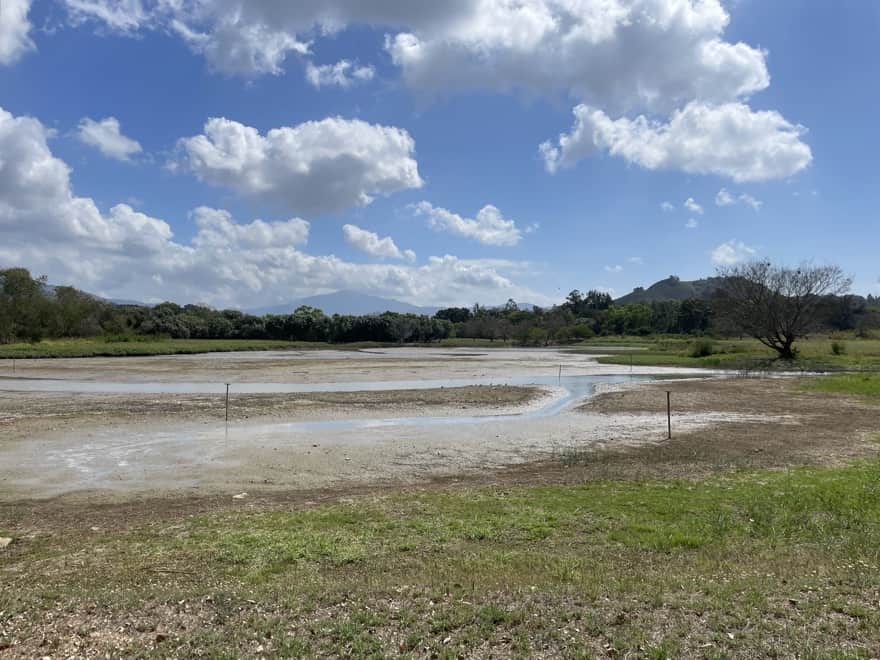
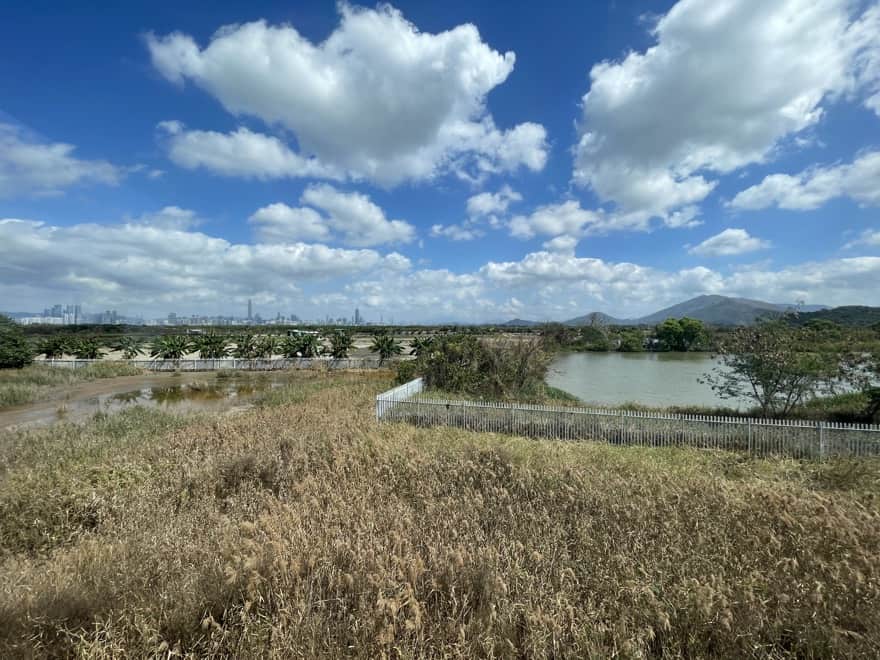
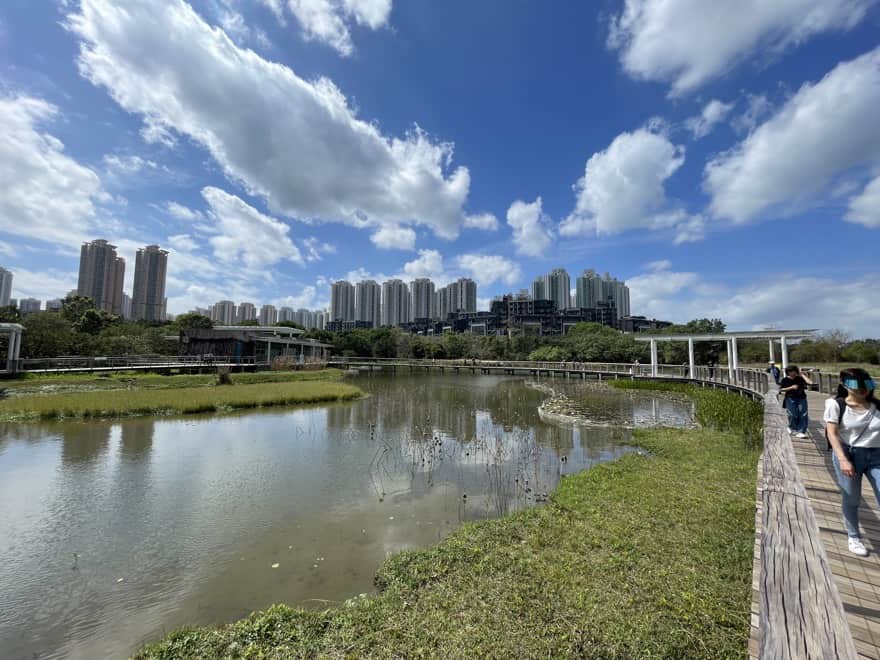
Wetland Park Photos, mainly taken 18 February 2024:
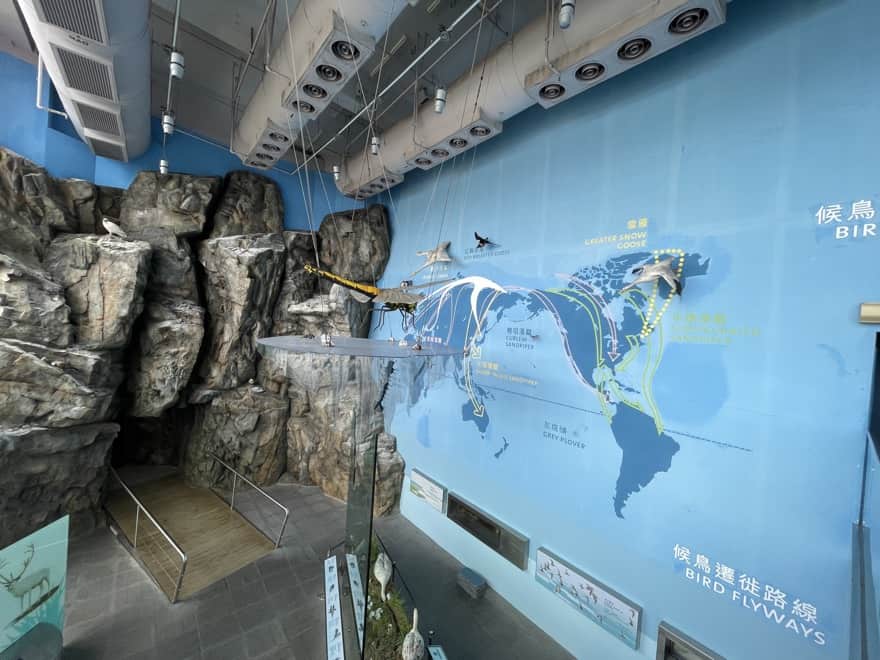
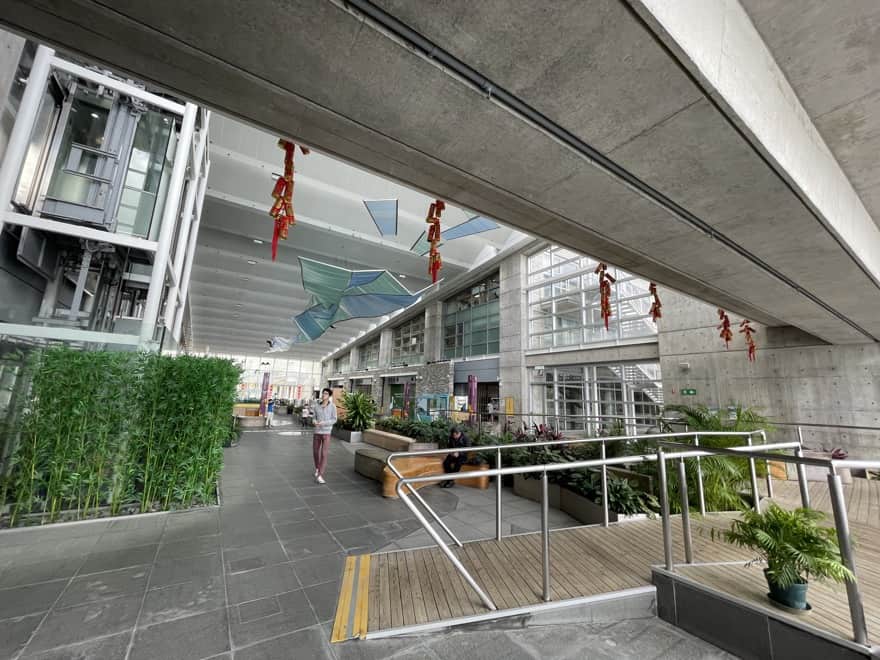

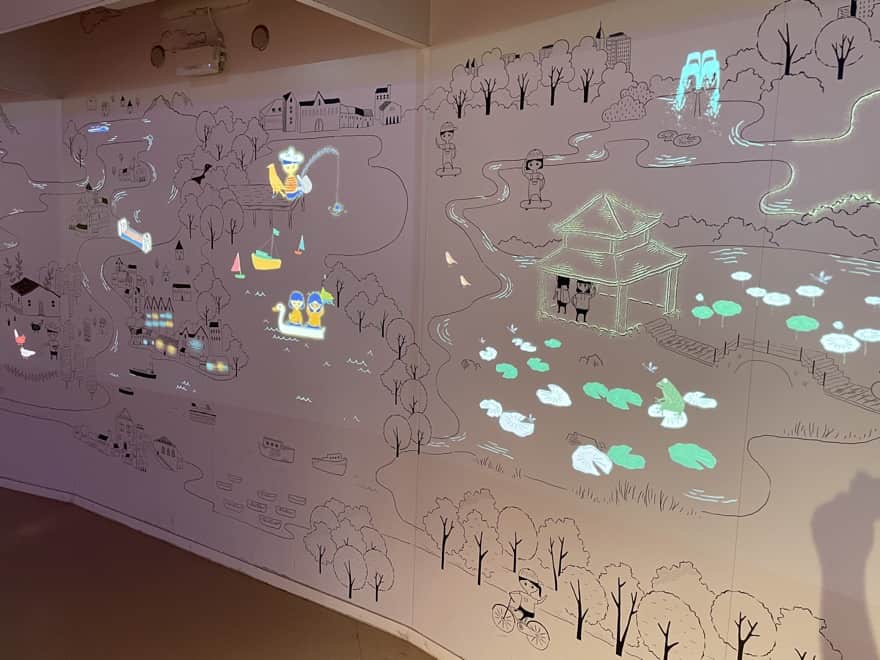
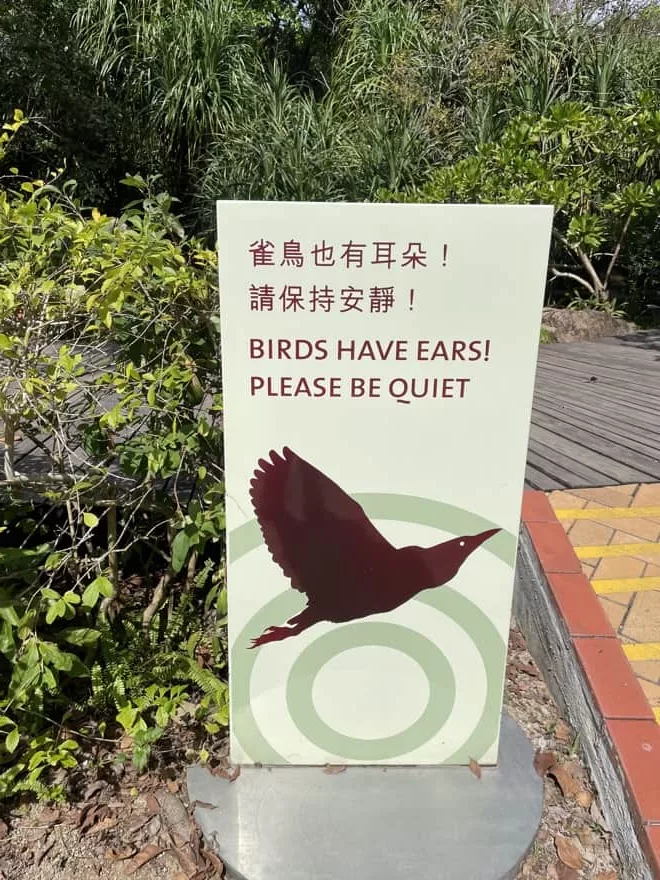
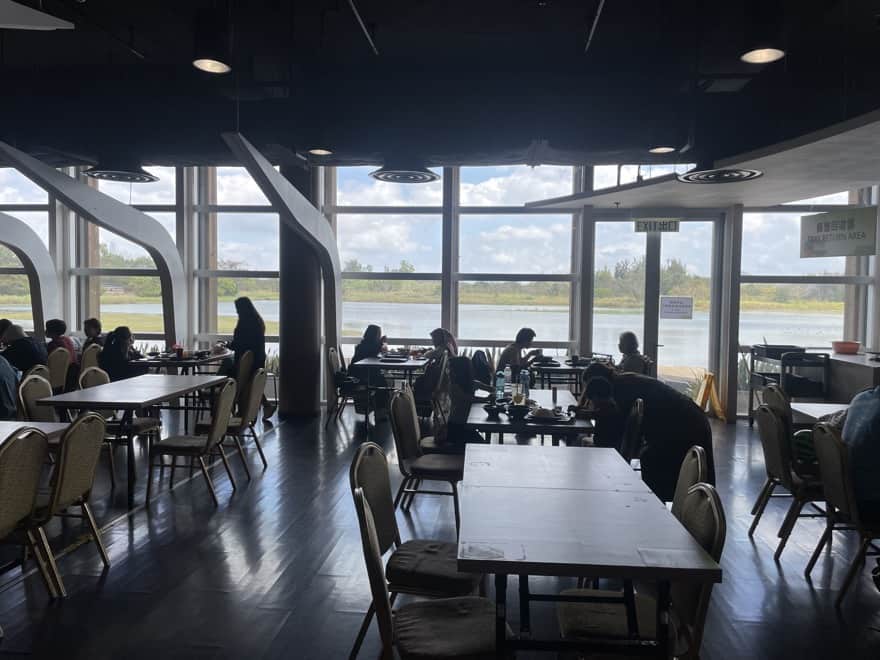
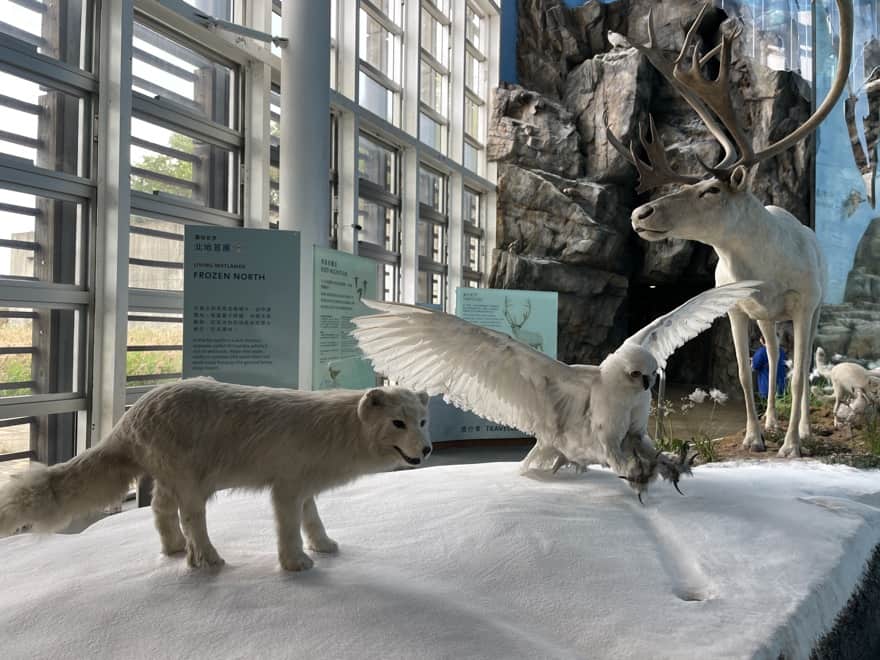
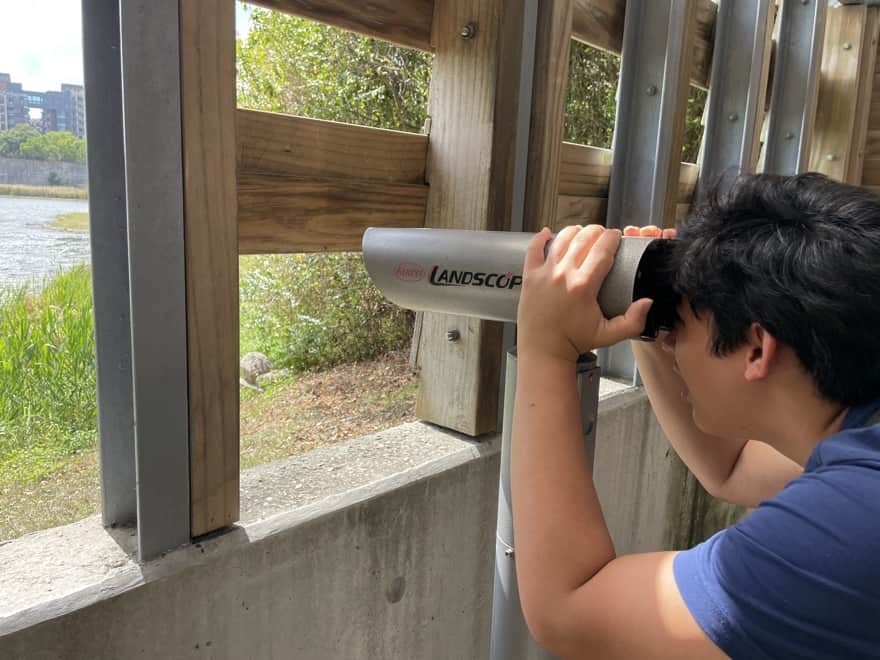
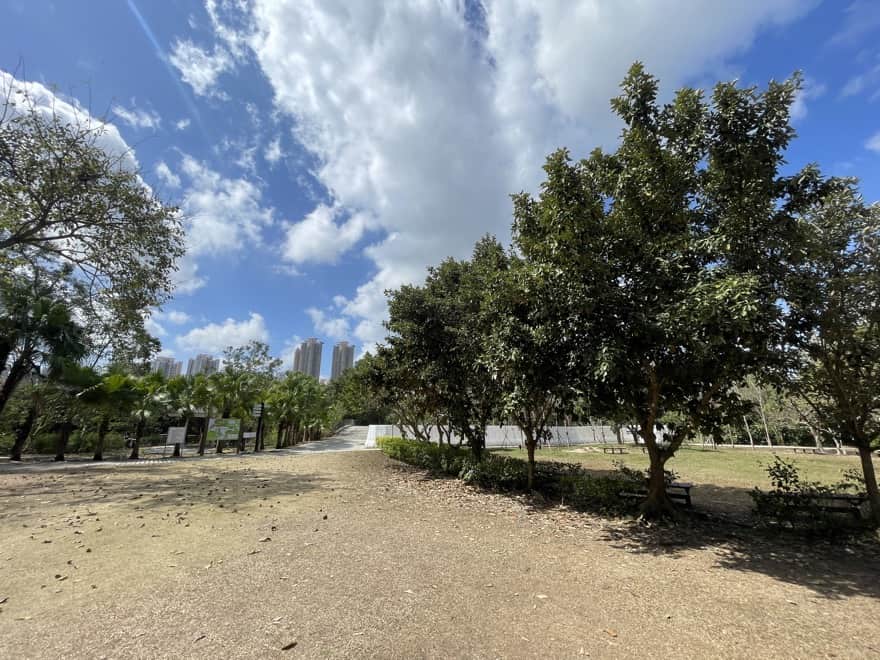
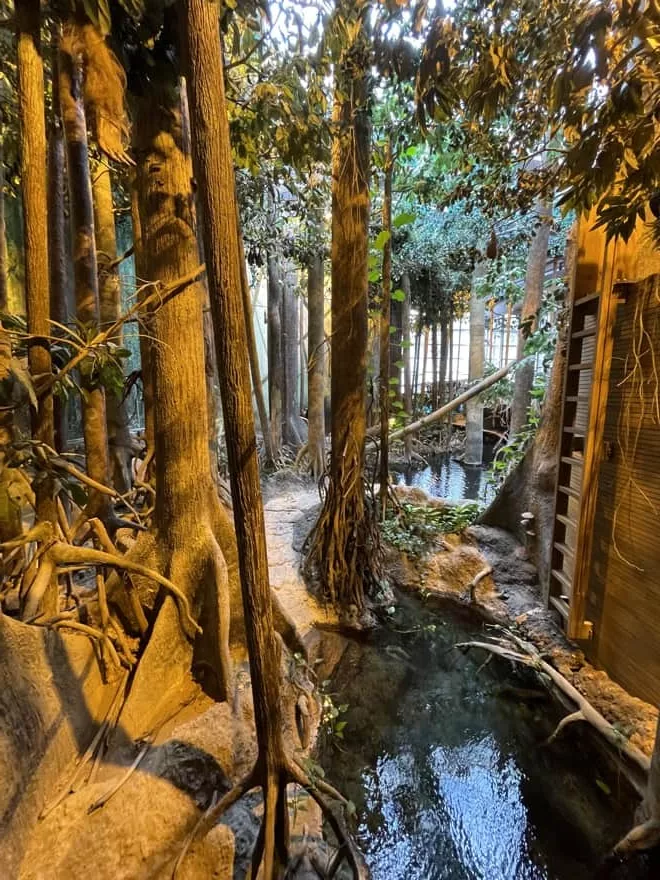
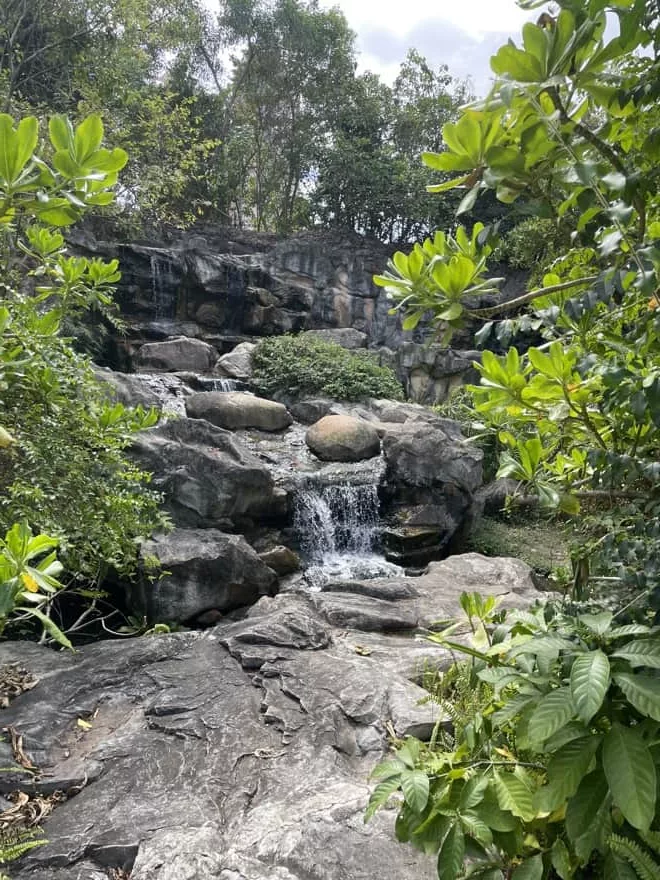
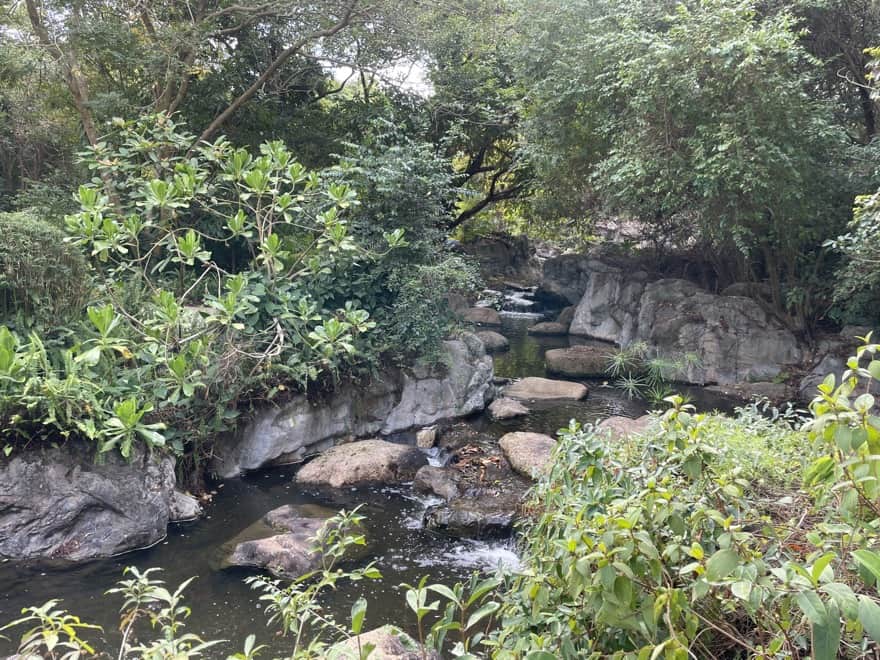
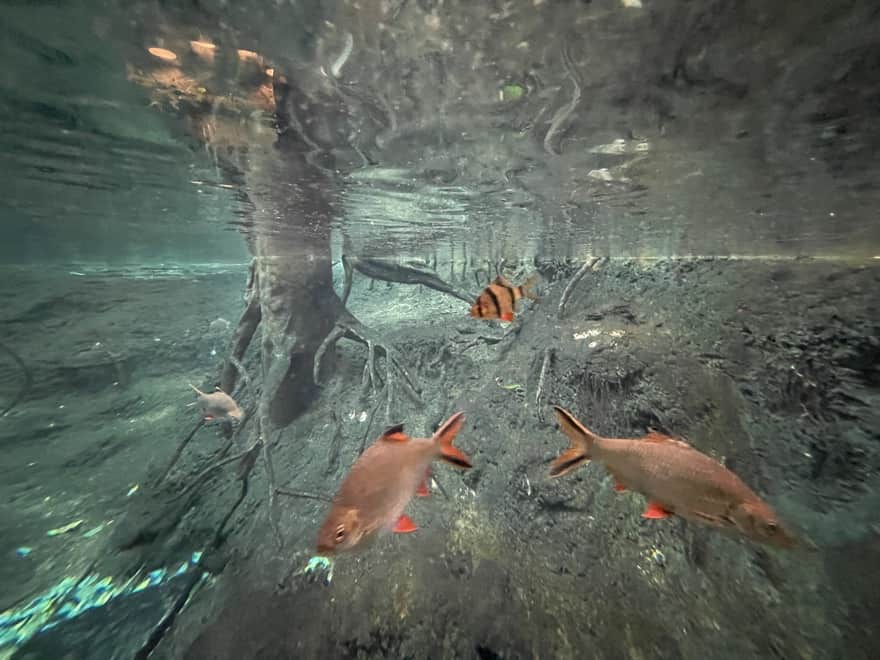

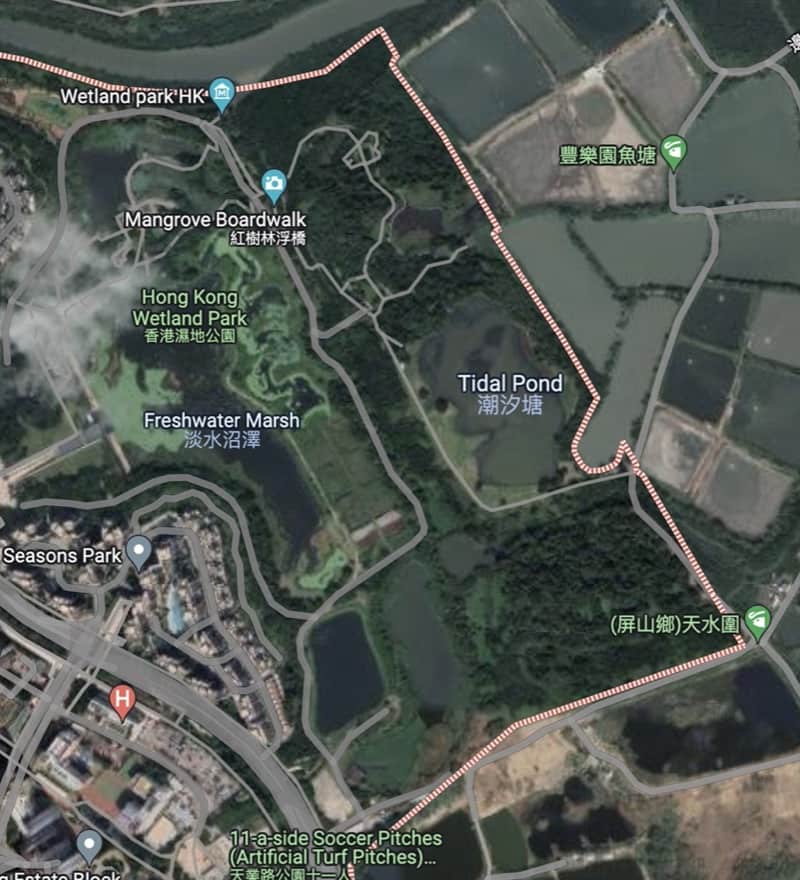
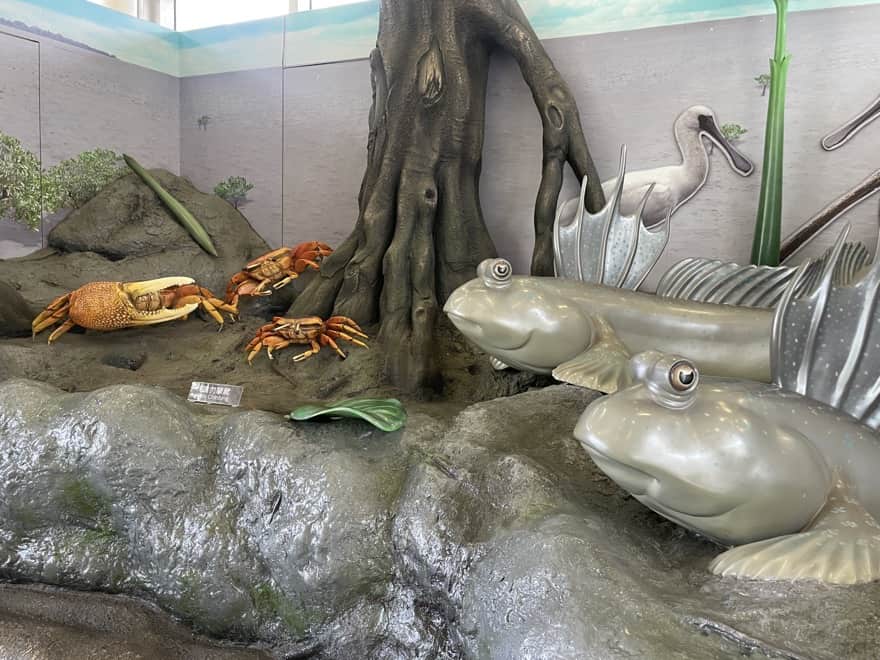
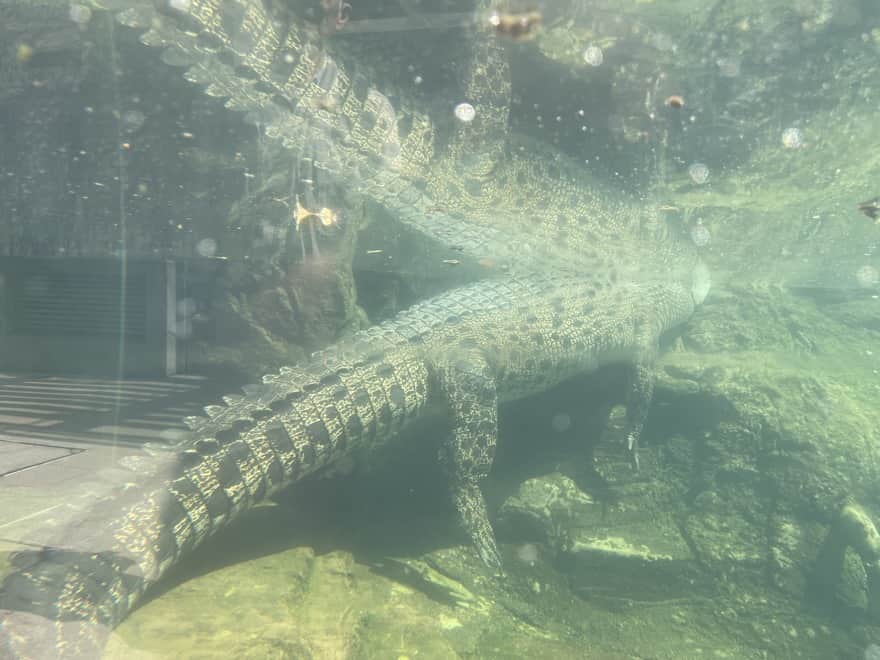
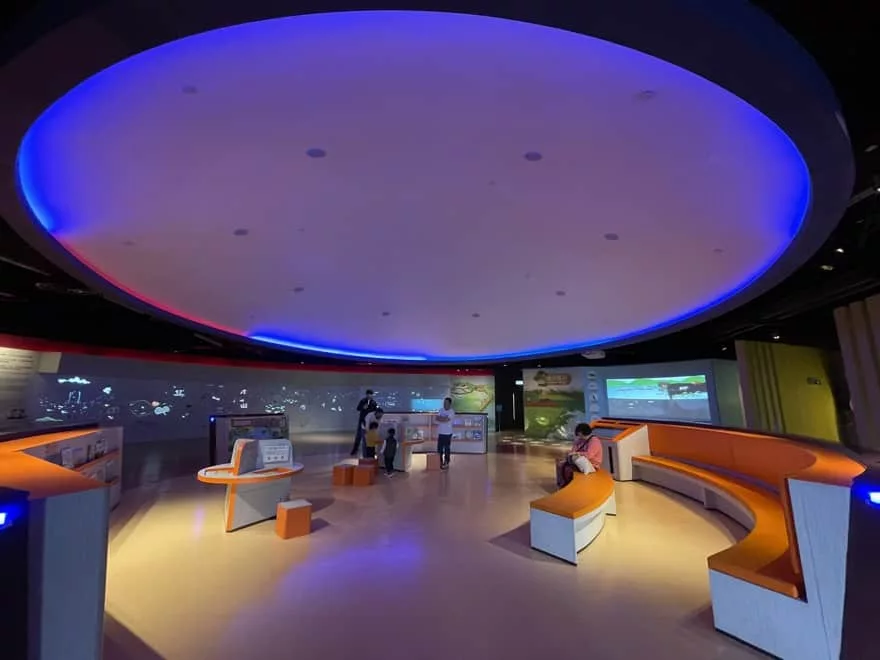
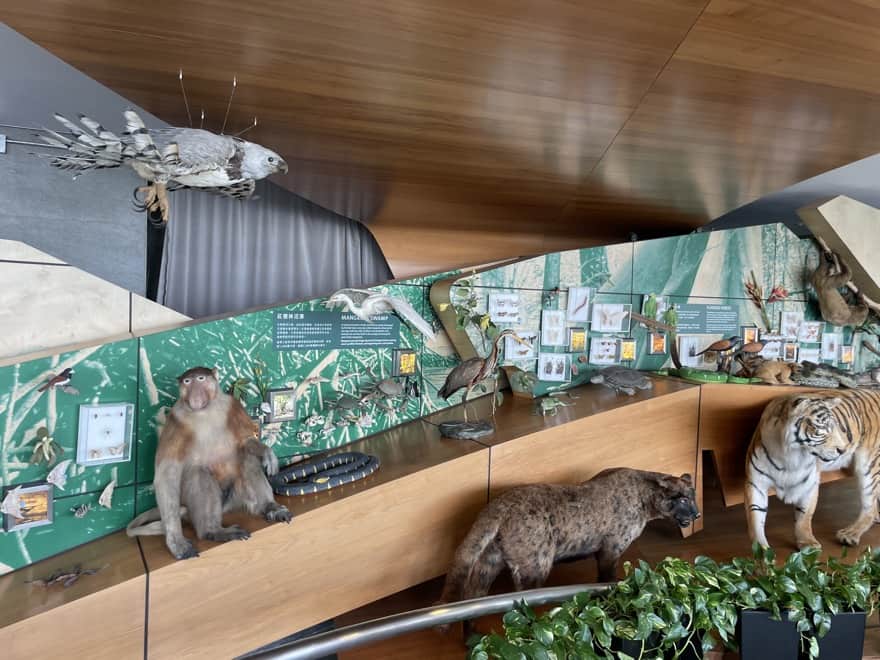
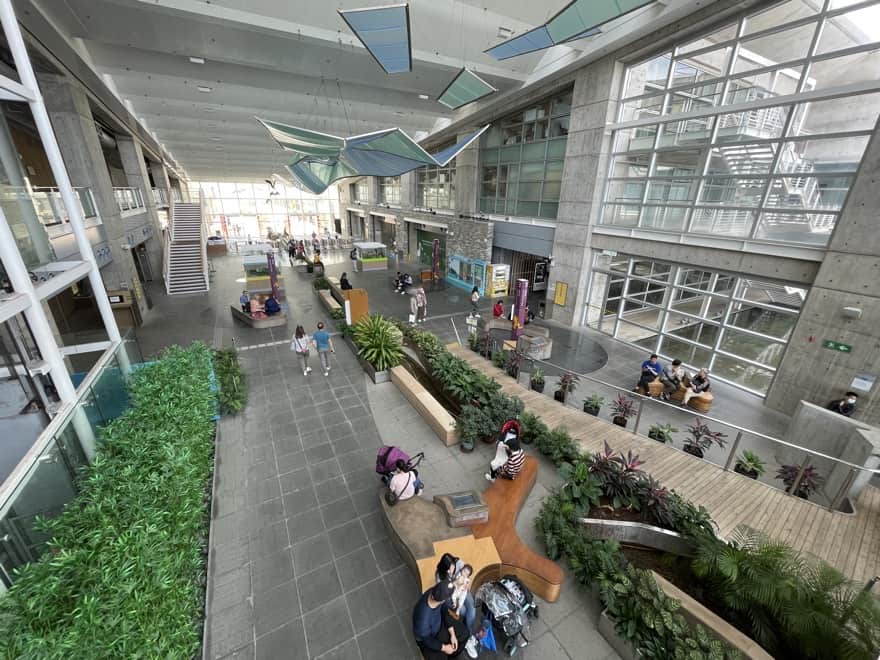
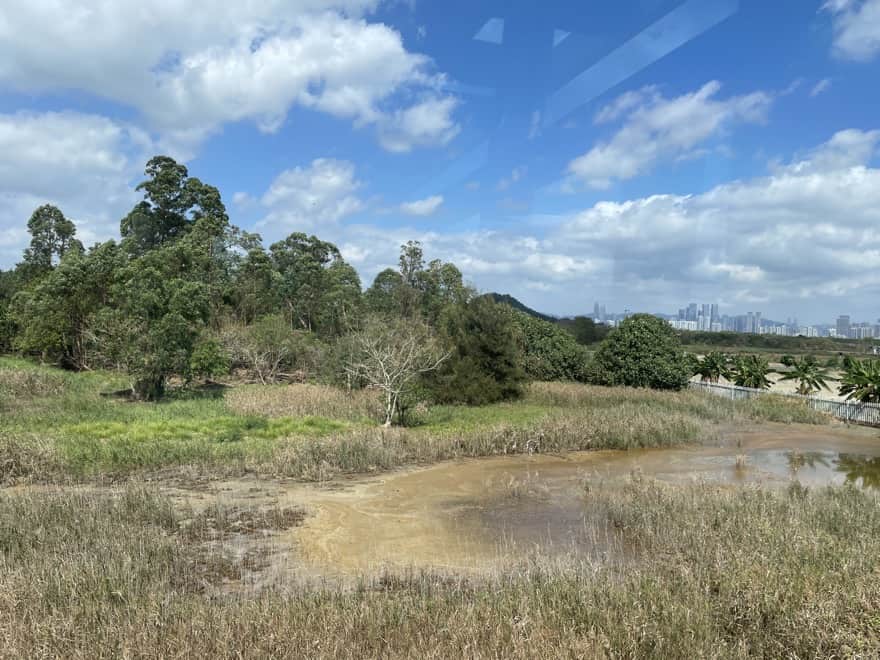
More info on the Wetland Park
See also forum thread here – Hong Kong Wetland Park – Wise Use of Money??, which includes some email correspondence I’ve had with the park manager, leading to my sending some suggestions for changes (not just being negative!).
HONG KONG’S WETLAND PARK – A CONSULTANT’S TALE An anonymous consultant (“Environmental scientist dropped out and living on Samal Island”) blogs about work leading up to creation of the Wetland Park, including claims of apparently being lone voice – among consultants and others working on project – in showing area was of ecological value. Weird but not wonderful consulting in “action”.
Deep Bay including Mai Po articles
If you’re among the privileged few with access to the inner sanctum of Deep Bay in northwest Hong Kong – a viewing hide at the…
If you’re unfamiliar with the Deep Bay wetland shared by Hong Kong and Shenzhen, you might wonder about the significance of the expanse of fish…
Here’s a film I made about Mai Po, using footage James Reynolds and I shot for the reserve, in English, Cantonese and Mandarin versions: Mai…
Yes, this is may seem impossible, ridiculous; but continuing with current state of affairs doesn’t look good for long term future of Deep Bay wetlands.…
Last decade, the future looked bright for the Deep Bay wetland, in northwest Hong Kong. [I wrote this for the South China Morning Post in late…
The WWF Hong Kong managed Mai Po Marshes Nature Reserve is undergoing an infrastructure upgrade, with a HK$347 million grant from the Hong Kong Jockey…
With the apartment blocks of Yuen Long and Tin Shui Wai to the southwest, Fairview Park estate to the south, and the urban sprawl of…
There is a Mai Po upgrade project underway [spring 2023], funded by a HK$347.86 million grant from the Hong Kong Jockey Club Charities Trust. This seems…
A “battle of the ponds” is underway in Hong Kong’s northwest corner. It focuses on Deep Bay, a wetlands area that borders on China, near…
“If you look at satellite photos of the Pearl River delta, Deep Bay really shows up. There is nothing else like it.” David Melville Published…
Though Mai Po Marshes is at the heart of Hong Kong’s internationally important Deep Bay wetland, there are other important sites in the area –…
Mai Po is a key component of the internationally important Deep Bay wetland, which straddles the border between northwest Hong Kong and Shenzhen.
Deep Bay in northwest Hong Kong is a wetland of international importance, a magnet for migratory waterbirds.
Mai Po Marshes has become one of the world’s greatest wetland reserves – and a place I’ve come to know well over the years. Indeed,…
Nam Sang Wai is part of the Deep Bay wetland.
At Mai Po Marshes Nature Reserve you can enjoy impressive wildlife spectacles.
Despite all the brouhaha, there is no H5N1 at Mai Po.
Mai Po Marshes Nature Reserve is a key part of the internationally important Deep Bay wetland


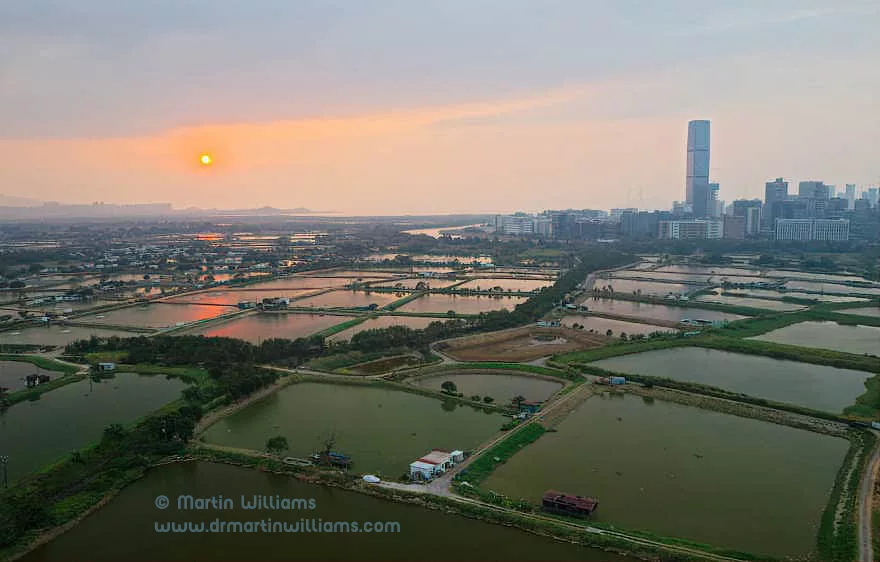
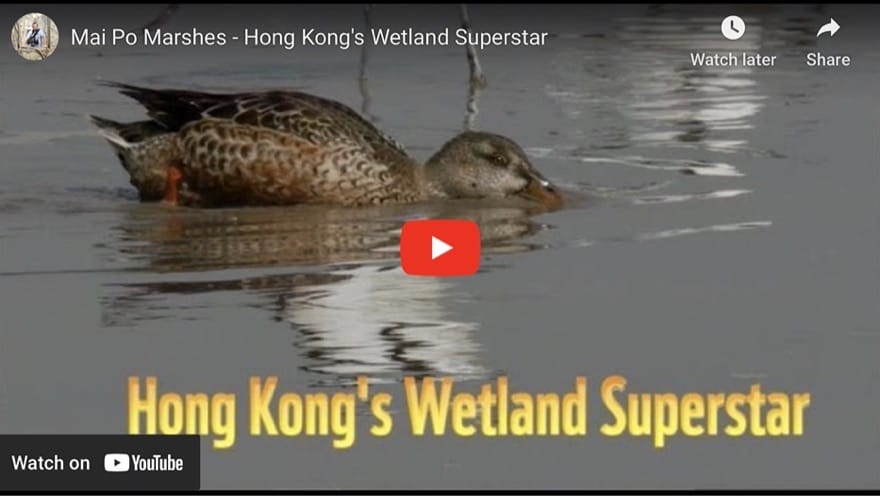
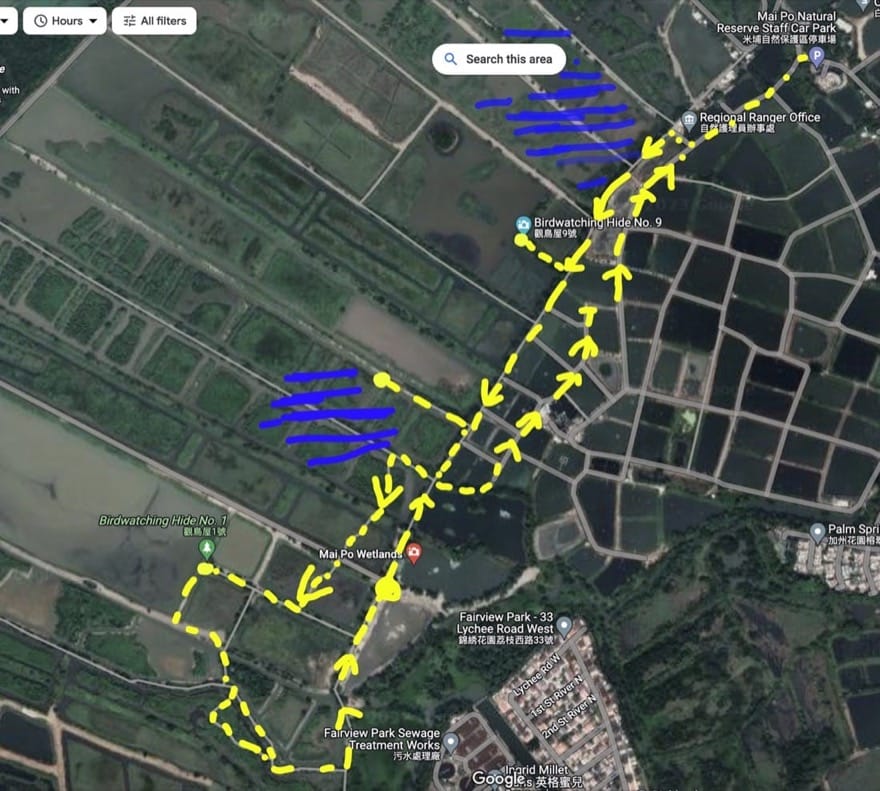
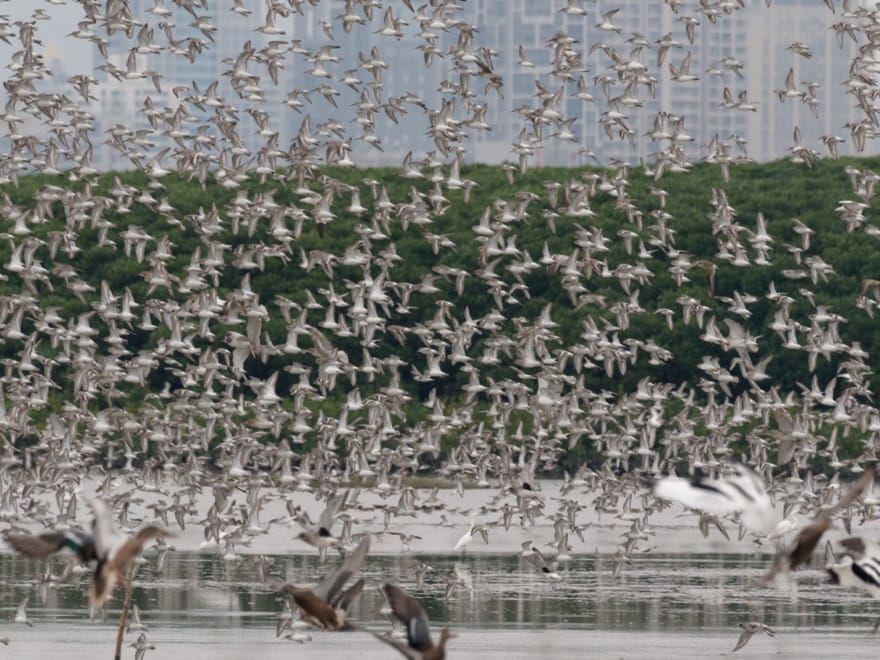
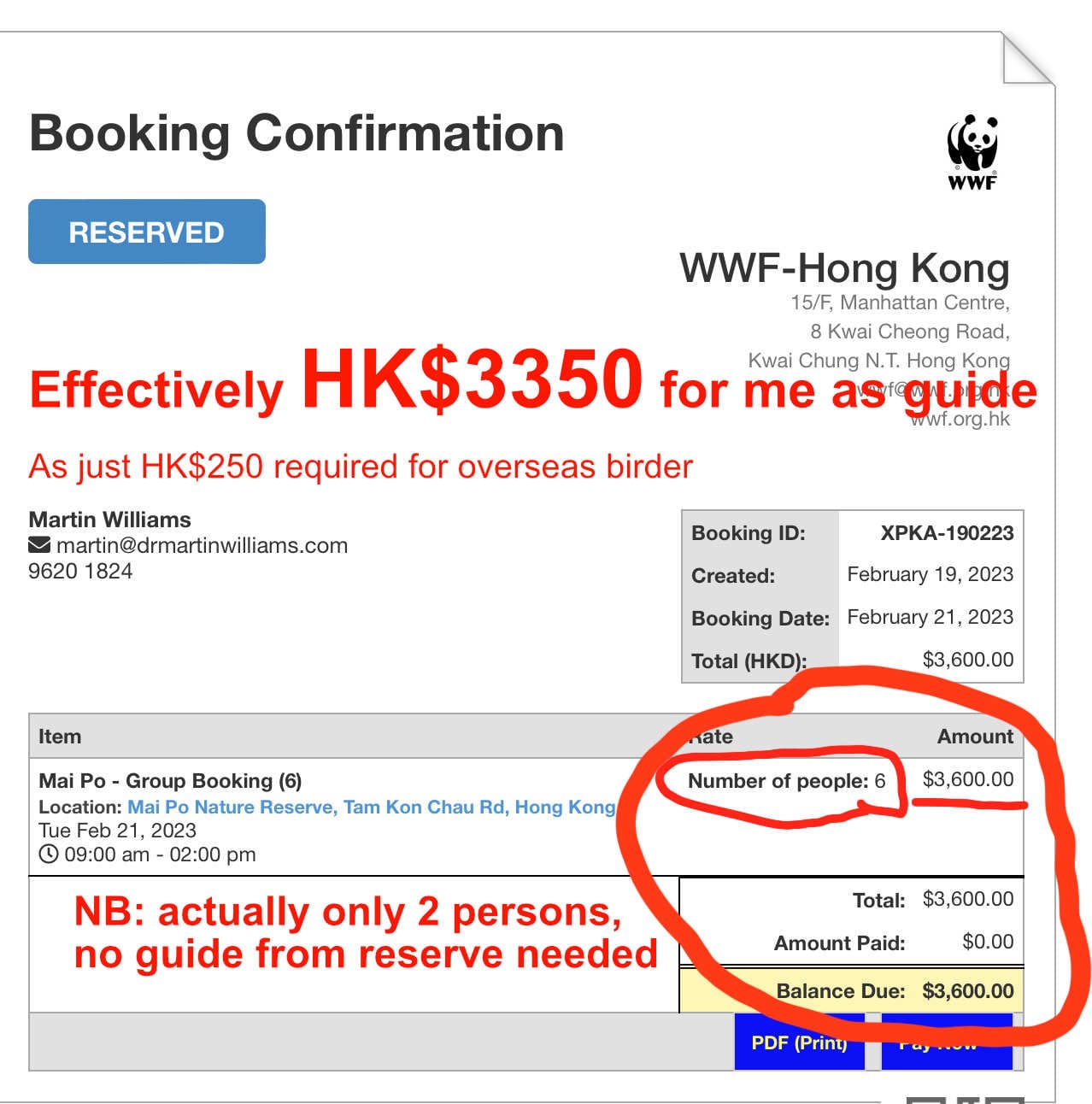
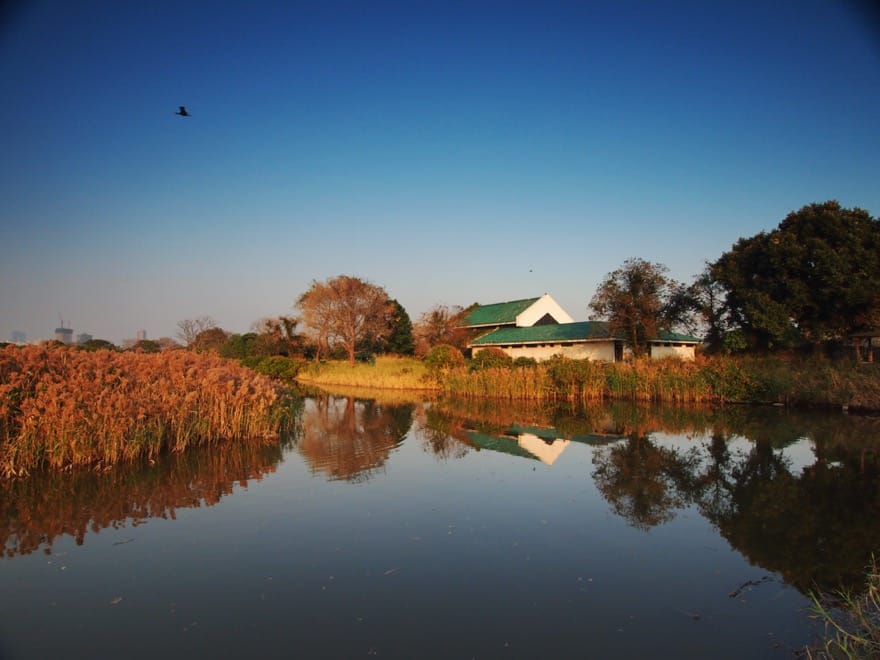
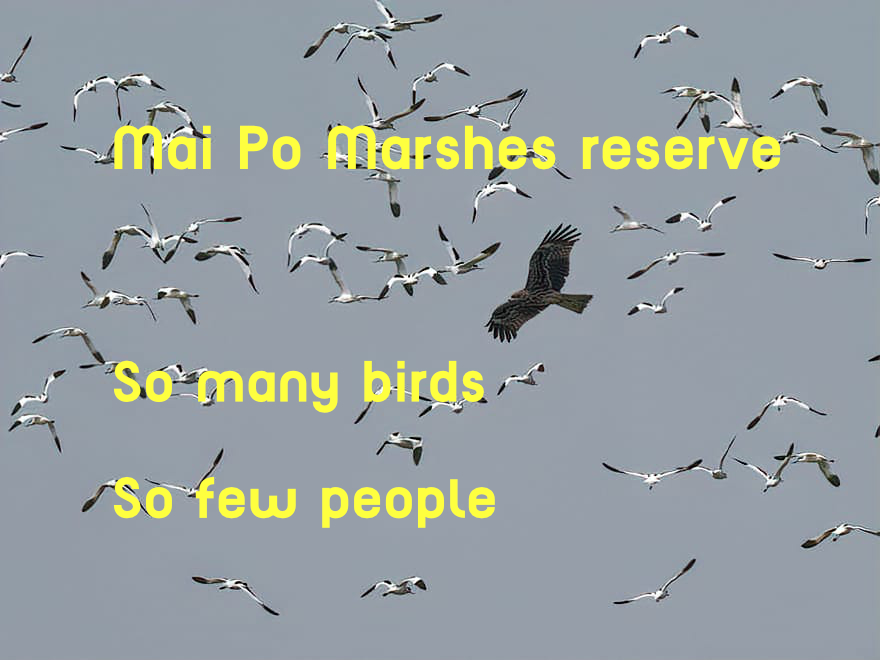
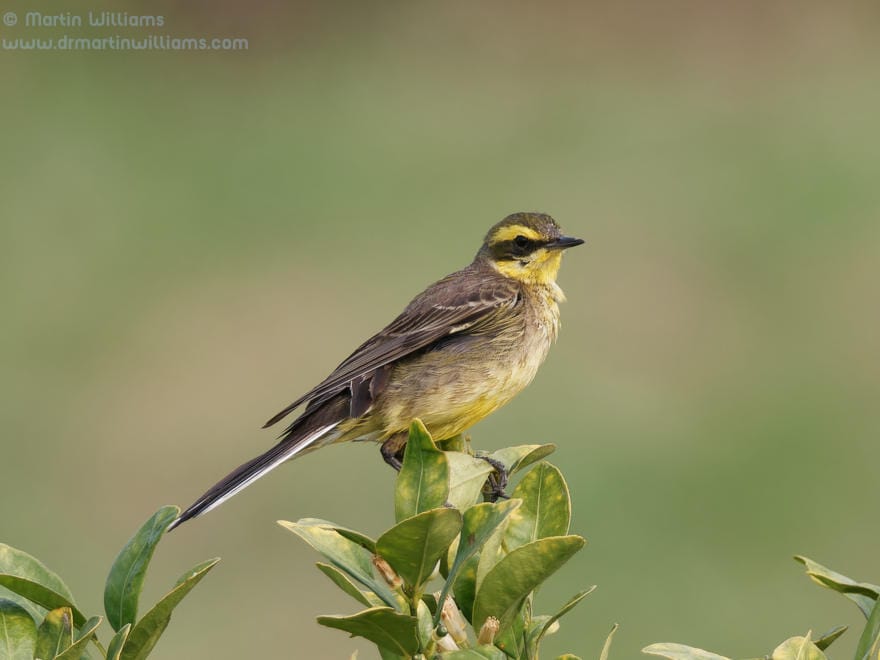
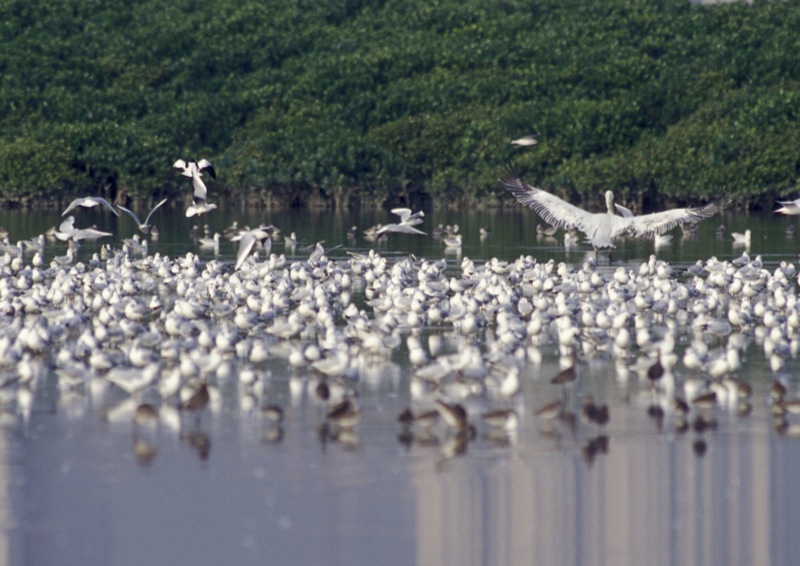
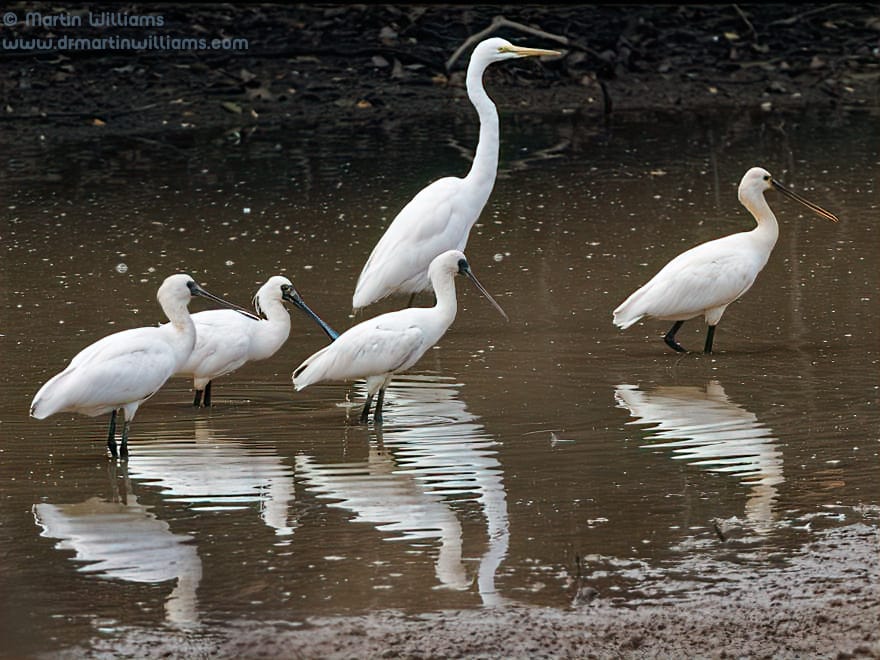
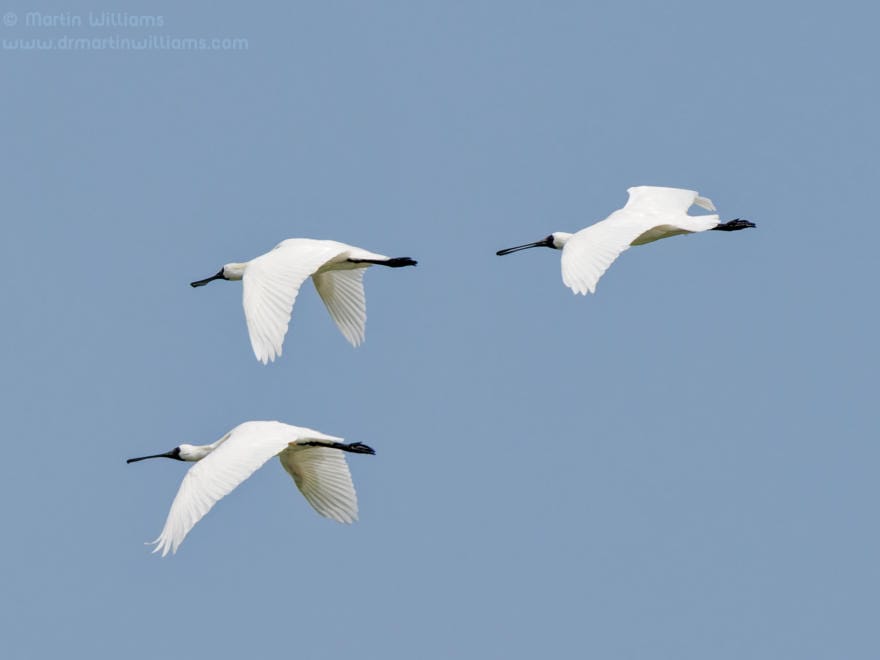
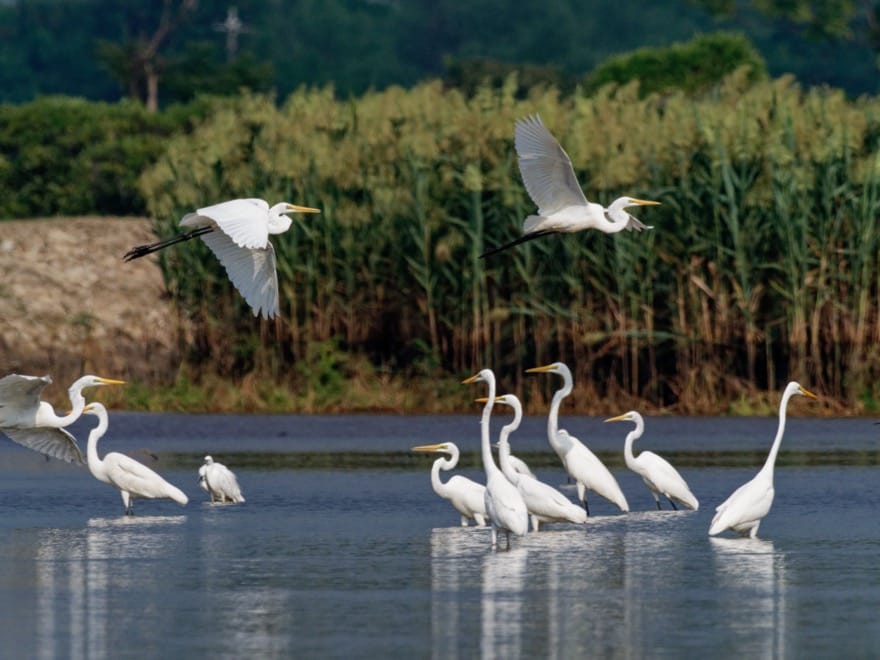
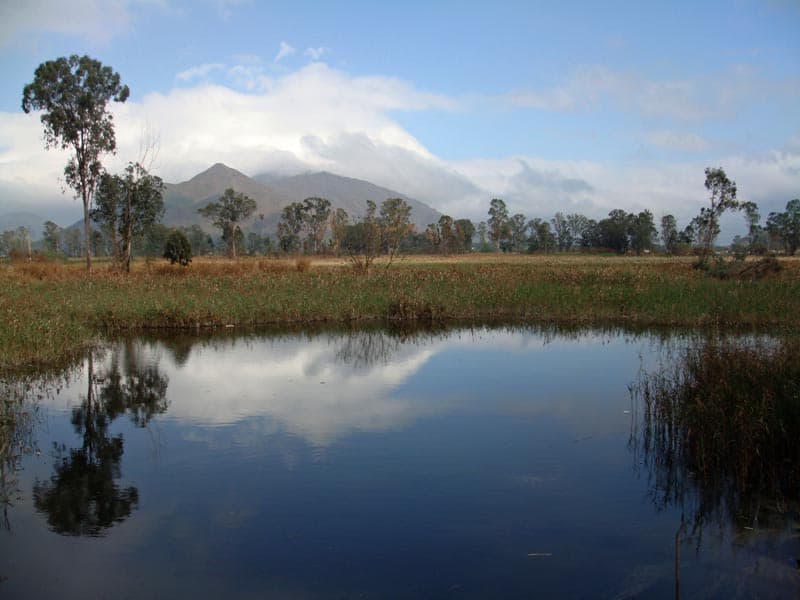
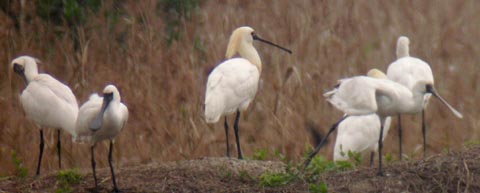

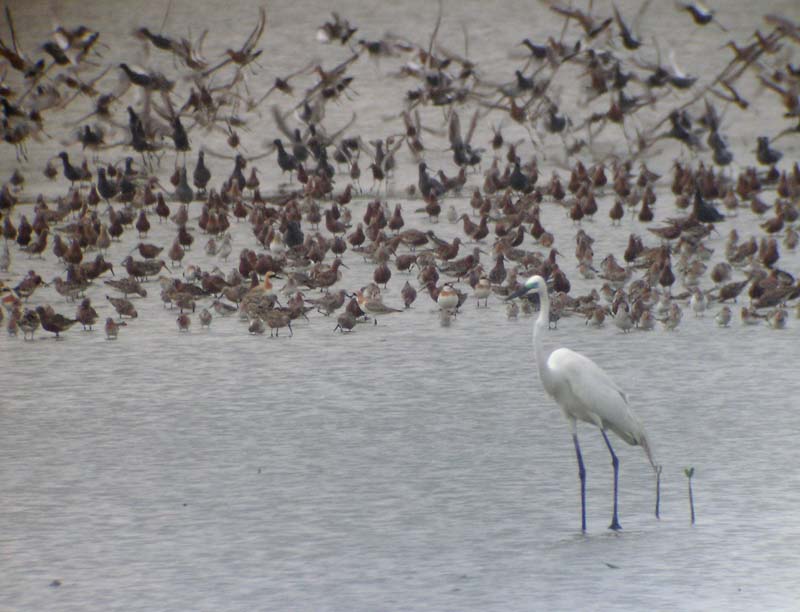

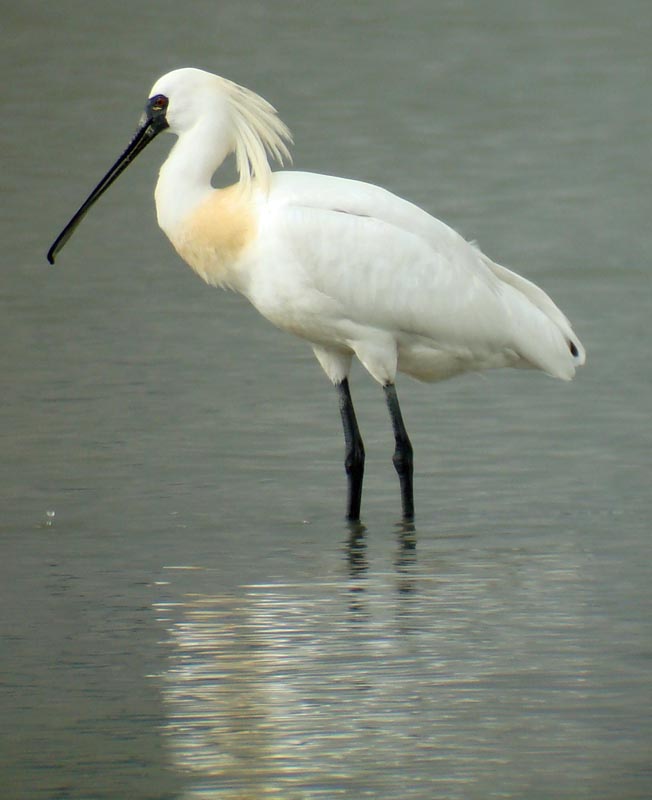
Just as expected!
This is an excellent article…I was planning to hike out there (by train) but as I scoured the web for HK Wetland spark and repeatedly came up with scanty wetlands photos more PR, touristy bad architecture…I got suspicious…As usual HK prefers style over sensibility…sensibility can be very stylish but…anyway, thanks for your honest enlightening review. I better race off to Mai Po before that disappears too!
Stop being so critical.
Stop being so critical.
Please don’t critisize Hong Kong!
You are being rude, man. I am a Hong Kong person, and I was very angry that you wrote this stupid article. Please stop at once. If you let the Hong Kong Goverment see this, you’ve done it. so please stop, otherwise i forbid you to come to Hong Kong.
any reasons
Maybe you'd like to add a thoughtful post on what's good about the Wetland Park. You'll be hard pressed to change my views tho.
Stop being hk person u r
Stop being hk person u r annoying, how can u ask someone to stop reviewing their thoughts about ones feelings over this context. He have given an honest review for others to read and understand. Wheres the bad part.
I was in Hong Kong Wetland Park and. I found it relaxing. The landscapes of the place are made by conservationist. I found it very harsh when you said, that it is an eco- tourism without an eco. It’ s not that easy to make a very dry land into wetlands. But you digged about vast of money compared to outcomes which I think out of line .
I found your very impolite . It so funny to think that you are suggesting some changes in the park and you are not part of the team. Do you know what you are doing? Work for yourself to go higher like becoming a consultant or part of a team. You will see how it is done . You cannot just simply suggest. I found you very impolite. People in Hong Kong who have higher rank are very polite. I dont know which kindergarten school you came from. Whatever you got in life if you are not polite, you have no value. You are a good writer , but if you just use this talent to spread good energy ,the world can be a better place to live.
Lastly, do not be bitter, be better.
Thanks for the comment; glad you enjoyed the visit, though note you mention finding it relaxing for yourself, no mention of seeing wildlife, which is rather as per a city park.
Turning dry land into wetlands; well that is not fully correct is it?
Why is it unfair to criticise use of vast amounts of public money?
I’m a birder, visited many a wetland reserve with landscaped, managed habitats, so have experienced plenty for comparisons.
As to “made by conservationists”; if this were true, would have a far better outcome. See linked article for story behind the “Wetland” Park.